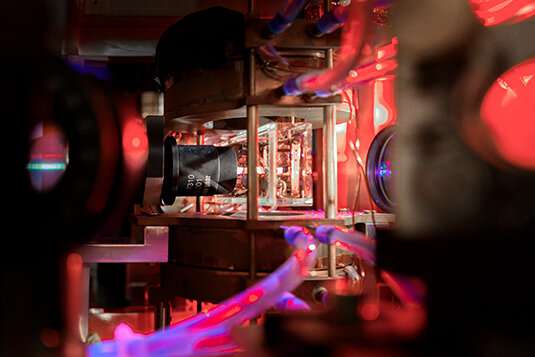Phys.org January 24, 2020
Entanglement between stationary quantum memories and photonic channels is the essential resource for future quantum networks. Together with entanglement distillation, it will enable efficient distribution of quantum states. Researchers in Germany entangled a rubidium atom with a photon and were able to detect the entangled state—which now shares the quantum properties of both particles—after its passage through a 20-km coil of optic fiber. Rubidium atoms emit photons with a wavelength of 780 nanometers which is rapidly absorbed. They built a quantum frequency converter that was specifically designed to increase the wavelength of the emitted photons from 780 to 1520 nanometers. In the next step, the researchers plan to frequency convert the light emitted by a second atom, which should enable them to generate entanglement between the two atoms over long telecommunications fibers…read more. TECHNICAL ARRTICLE

Picture of the single atom trap. In the ultra-high vacuum glass cell, a single Rubidium atom is captured, which later will be entangled with a photon. Credit: C. Olesinski/LMU